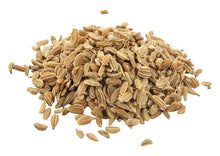
The earliest definitely known to be a carrot dates from the 10th century and would have been quite unlike the orange rooted carrot of today. It is considered that Carrots were originally purple or white with a thin root, then a mutant occurred which removed the purple pigmentation resulting in a new race of yellow carrots, from which orange carrots were subsequently developed.
The Purple Carrots are unique in that it appears quite differently when it is sliced than when it is pulled. These carrots have a deep purple exterior, but when they are cut into, a bright orange interior is revealed. Also, they are quite sweet and tender.
These strains grow to an average of eight inches long with a tapered end. This variety does well in areas in the garden with full sun, in zones three to nine. The roots grow straight down, so they require a soil free of rocks, preferably sandy. The Purple carrot is ready to harvest between sixty and seventy days.
Growing
Carrots grown in garden are full of flavor and texture. They are easy to grow as long as they are planted in loose, sandy soil during the cooler periods of the growing season—spring and fall (carrots can tolerate frost). Depending on the variety and local growing conditions, carrots may take anywhere from 2 to 4 months to mature. Plant them in the spring and summer for a continuous harvest through fall!
Planting
- Proper soil preparation is extremely important for carrot growing. If the carrot roots can’t easily grow unobstructed, it can lead to stunted and misshapen crops. Till down 12 inches and make sure there are no rocks, stones, or even soil clumps that could impede your carrots’ growth.
- Sow seeds outdoors 3 to 5 weeks before the last spring frost date. For continuous harvest, sow seeds every 2 weeks through late spring. For a fall harvest, sow seeds in mid- to late summer—starting about 10 weeks before your first fall frost.
- Sow seeds directly in the garden rather than transplanting. Carrots do not like to have their roots disturbed.
- Keep the soil moist with frequent shallow watering. For small carrot seeds to germinate, the soil shouldn’t form a hard crust on top; cover with a layer of vermiculite or fine compost to prevent a crust from forming.
- Avoid amending the soil with nitrogen-rich fertilizer, which causes carrots to fork and grow little roots.
- If the ground has clay, consider planting in a raised bed at least 12 inches deep and filled with airy, loamy soil.
- Choose a location that receives full sunlight. Carrot plants can tolerate partial shade too.
- Soil must be loose, sandy or loamy, and airy so that carrot roots can easily push down through the soil.
Care
- When seedlings are an inch tall, thin so that they stand 3 to 4 inches apart. Snip tops with scissors instead of pulling them out to prevent damage to the fragile roots of the remaining plants.
- Gently mulch carrots to retain moisture, speed germination, and block the sun from hitting the roots directly.
- Water at least one inch (about ½ gallon per square foot) per week to start, then two inches as roots mature.
- Weed diligently, but be careful not to disturb the young carrots’ roots while doing so.
Pests / Diseases
- Pests: Black canker, Carrot rust flies, Flea Beetles, Root-knot nematodes, Wireworms
- Aster Yellow Disease will cause shortened and discolored carrot tops and hairy roots. This disease is spread by pests as they feed from plant to plant. Keep weeds down and invest in a control plan for pests such as leafhoppers. This disease has the ability to overwinter.










